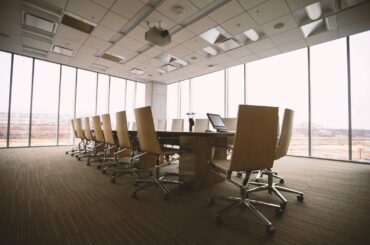Ever wondered why some startups skyrocket while others plummet? It’s all about strategy. Enter the world of lean startups, a game-changing approach pioneered by Eric Ries. Far from being mere hype, this technique offers a solid foundation for cultivating enduring enterprises.
Delving into the narrative, you’ll grasp how embracing lean startup methodologies such as swift model crafting and evidence-based learning significantly reduces time to market while enhancing your offering’s alignment with consumer demands. We’ll also create minimum viable products (MVPs) to test the waters without sinking your budget.
Diving deeper, the art of refining your offering hinges on mastering the cycle of receiving and acting upon customer insights, a process we’re about to unpack with strategies that turn feedback into fuel for relentless enhancement. So, if you aim to create radically successful businesses or fine-tune your current venture, stick around for proven strategies that work in today’s fast-paced market.
The Genesis of Lean Startup
When Eric Ries coined the term Lean Startup, he wasn’t just introducing a new phrase but setting the stage for a revolution in how startups approach product development and business growth. The lean startup methodology, at its core, is about learning what your customers really want quickly and efficiently. This means less time spent building products nobody wants and more time refining ones that show real promise.
Globally embraced, this strategy has slashed waste and enhanced the alignment between products and market demands among firms that have adopted it. It’s not hard to see why when you consider that by focusing on validated learning through rapid prototyping, businesses can pivot or persevere based on actual data rather than guesses.
Key Principles Behind the Methodology
The heart of the lean startup methodology lies in its key principles: build-measure-learn loops, minimal viable products (MVPs), and continuous innovation. These aren’t just buzzwords but strategies designed to maximize resources and minimize losses during a startup’s precarious early stages. For instance, launching MVPs allows entrepreneurs to test their hypotheses with minimal resources before committing fully.
Innovation doesn’t stop after launch day either; it’s an ongoing process driven by customer feedback. Adopting these principles has enabled numerous companies worldwide to stay agile and responsive—traits crucial for survival in today’s fast-paced market environment.
Core Principles of Lean Startup Methodology
The lean startup methodology, Eric Ries’s brainchild, turns traditional business management on its head. By focusing on Lean principles, companies are slashing development cycles by up to 50%. In today’s swiftly evolving marketplace, achieving such a significant reduction in development time is nothing short of remarkable.
Embracing Continuous Innovation
Innovation isn’t just a buzzword in the lean startup world; it’s the engine that drives everything forward. Companies that adopt lean thinking and management philosophies don’t just tweak around the edges—they reimagine what’s possible. By adopting a new way of thinking, numerous startups have accelerated their pace and minimized excess, ensuring they meet customer demands from the very start.
This approach isn’t about throwing everything at the wall to see what sticks but making informed bets based on validated learning from real customers. The key here is speed coupled with insight—getting your product into users’ hands quickly, then iterating based on feedback. Companies remain agile and attuned to their audience’s needs in this dance of creation, assessment, and adaptation.
Rapid prototyping plays a huge role, too. Instead of spending months or years perfecting a product before launch, lean methodologies advocate for developing minimum viable products (MVPs). These MVPs go straight to testers’ hands, answering critical questions about customer interest and product viability early on. Over 70% of successful startups have followed this path, underscoring how vital an MVP can be for validating ideas and saving precious resources.
Building a Minimum Viable Product (MVP)
Starting your journey with an MVP is like sketching the first draft of your masterpiece. It’s about bringing to life the essence of your idea while keeping things lean and mean.
A minimum viable product, or MVP, is essentially the simplest version of your product that can still solve users’ problems. Why go down this route? Because it lets you test, learn, and iterate without burning through resources. Think about it: over 70% of successful startups started with an MVP.
Crafting products this way isn’t solely about economizing resources; it’s fundamentally about ensuring your creation meets an actual demand. This approach enables quick adjustments based on real user feedback rather than assumptions.
To nail this process right from the start, focus on stripping down to what’s truly essential for your product to function. Ask yourself: What features are must-haves for my initial launch? From there, dive into rapid prototyping followed by vigorous testing phases involving actual users who can give honest feedback.
Remember that every refinement cycle garner crucial understanding, guiding us closer to crafting a product that meets and exceeds expectations. With every cycle of development and learning based on customer interactions, you inch closer to market fit and potentially even uncover opportunities for innovation you hadn’t thought possible before.
Customer Feedback and Validation
Gathering customer feedback isn’t just a nice-to-have; it’s crucial for steering your product in the right direction. Startups that engage their customers for feedback can reduce time-to-market by an impressive 30%. This is because direct insights from test customers lead to validated learning, which informs smarter decisions.
To tap into this goldmine of information, first, create avenues where your users can easily share their thoughts. Whether through surveys, social media interactions, or beta testing programs, make sure you’re listening. But here’s the catch – not all feedback will be useful. Learn to sift through the noise and focus on consistent patterns that align with your business goals.
Once you’ve collected this data, act on it swiftly but thoughtfully. Integrating user input into your development process shouldn’t mean chasing every suggestion but instead identifying changes that most effectively address common concerns or desires among your user base. Crafting a hit product revolves around generating substantial benefits for its users and weaving value into their experiences.
The power of validated learning cannot be overstated when developing products within the lean startup framework. Through relentless experimentation with actual customer reactions and tastes, startups greatly enhance their likelihood of triumph, concurrently conserving resources by steering clear of unproven concepts.
Continuous Innovation and Business Success
In our swiftly evolving global market, the essence of radical business triumph lies not merely in having innovation as an added bonus but in recognizing it as the fundamental pillar. It’s about staying ahead, adapting quickly, and always being ready to pivot when necessary.
Businesses that embrace this mindset have a 75% higher chance of thriving in the long run. This figure starkly underscores the importance of continuous innovation in staying competitive and securing enduring triumphs.
The lean startup methodology ensures businesses stay ahead by encouraging swift trial and error rather than detailed strategizing. It prioritizes direct responses from users and gradual improvement in product design, moving away from the conventional approach of extensive initial development. These principles ensure companies can evolve with customers’ needs, reducing market risks and resource wastage.
One core aspect of this approach is developing minimum viable products (MVPs). MVPs let startups test their hypotheses with minimal resources before fully committing to an idea. Over 70% of successful startups began this way, proving it’s not about perfecting every feature but instead validating the fundamental business model first.
Gathering customer feedback early ensures product development aligns closely with market demands. Engaging customers from the outset not only fine-tunes your offering but also significantly cuts down time-to-market by around 30%. Incorporating feedback from actual users at every stage allows companies to polish their offerings with unprecedented precision.
This relentless pursuit of improvement through building, measuring, and learning cycles makes lean startups remarkably agile and resilient—a necessity in today’s dynamic markets, where consumer preferences shift at lightning speed.
Testing and Iterating Products
The lean startup method gets to the heart of product development with its build-measure-learn feedback loop. We’re in a loop of crafting goods that genuinely resonate, constantly refining based on the genuine feedback from those who use them.
Let’s talk about the first step: building. But not just anything—we’re focusing on minimum viable products (MVPs). These MVPs are basic versions of your ideas designed to test whether your concept has wings. Over 70% of successful startups begin this way, so it’s clear that starting small can lead to big things.
Next up in our loop is measuring. Here, every click, like, and customer comment becomes gold dust. This insight allows us to discern the effective strategies from the ineffective ones. And guess what? Lean startups nail their product launches 40% more often because they don’t just throw stuff at the wall to see what sticks—they test meticulously.
Last but not least, learn from everything you’ve built and measured. Incorporating user feedback isn’t a one-and-done deal; it’s an ongoing conversation that steers your ship through stormy seas toward success.
Far from being mere drudgery, this cyclical approach slashes the time it takes to refine your project in half. That means faster releases, quicker learnings, and more chances to hit the jackpot with your target audience.
Embarking on this adventure, we’ve delved into the realm of lean startups, a concept brought to life by Eric Ries. You’ve seen how it’s not just a buzzword but a lifeline for businesses aiming for the stars.
Dive deep into rapid prototyping and validated learning; they’re your best friends in slashing development times and nailing that product-market fit. Remember, starting small with an MVP can save you big time – both money and effort.
And let’s not forget about listening to your customers. Their feedback is gold; use it to tweak and improve continuously.
At their core, lean startups thrive by wisely managing resources, actively heeding feedback, and being nimble in their creation process. Embrace these principles if you’re eyeing long-term success in today’s fast-moving markets.
Subscribe to my LEAN 360 newsletter to learn more about startup insights.





